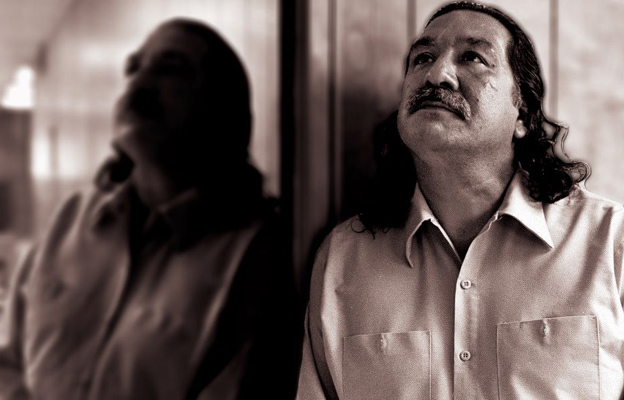Dealing with the Indigenous Suicide Epidemic
Asking for help is not a sign of weakness, asking for help shows a sign of strength!
Suicide is a very big problem within Native American Indian communities, yet it’s something that is barely spoken about. Many Native families know someone who committed or attempted suicide.
A discussion is critical at this point to understand and prevent why these suicides keep happening, and how we can prevent further suicides from happening in the future. This life and death issue that affects the heart of Indian Country hardly ever gets any press.
The Centers for Disease Control and Prevention (CDC) 2010 report suicide rate at 16.93 per 100,000 for American Indians and Alaska Natives of all ages was much higher than the overall U.S. rate of 12.08 per 100,000.
Suicide was the eighth leading cause of death for American Indians and Alaska Natives of all ages and the second leading cause of death among youth ages 10–24.
Suicide rates vary widely among tribes. For example, the teenage suicide rate on the Pine Ridge Reservation is 150% higher than the U.S. national average for this age group.
Another example regarding the White Mountain Apache people was much higher (45.4 per 100,000) than among all American Indians/Alaska Natives (13.93 per 100,000) in the same time period of 2001–2006.
The suicide rate for White Mountain Apache youth ages 15–24 (128.5 per 100,000) was much higher than the rate for all Indigenous American and Alaska Native youth of the same ages in the same time period (24.62 per 100,000).
In the years 2003–2006, Alaska Natives had a suicide rate of 51.4, compared to 16.9 in the non-Native Alaska population. However, there was considerable variation in the suicide rates of Natives among the different regions of the state and the different Native ethnic groups, with the Inupiat Eskimos having the highest rates, and the Aleuts having a rate lower than the rest of Alaska.
Native American Suicide Epidemic Video Playlist
Native American Indian Youth
- American Indians/Alaska Natives high school students report higher rates of suicidal behaviors than the general population of U.S. high school students based on the comparison results of a 2011 Youth Risk Behavior Survey of high school students.
- The percentage of American Indian / Alaska Native female students reporting suicidal thoughts and behaviors was higher than that of White female and American Indian / Alaska Native male students.
- Lifetime rates of having attempted suicide reported by adolescents ranged from 21.8% in girls to 11.8% in boys and from 17.6% of both sexes raised on reservations to 14.3% of both sexes raised in urban areas.
- Lifetime rates of suicidal ideation were significantly higher among Native youth raised on reservations (32.6%) compared to Native youth raised in urban areas (21%).
Strengths and Protective Factors
Effective mental health care Connectedness to individuals, family, community, and social institutions with problem-solving skills and contacts with caregivers.
Two large studies (Borowsky et al. Suicide Attempts, Mackin, J., Perkins, T., & Furrer, C. found that for American Indian / Alaska Native youth strengthening protective factors may be more important than reducing risk factors in addressing suicide risk.
In addition to the four protective factors above, research has shown the following to be among the most significant protective factors in American Indian / Alaska Native populations:
Community control:
In a Canadian study of data from the British Columbia Coroner’s Office, tribes with no suicides had more indicators of cultural continuity. Cultural continuity was defined as having infrastructure, such as the presence of cultural facilities, and sovereignty, such as self-government, having title to their traditional lands, and the provision of services within the community, including education, police, and fire; health care delivery; and child and family services.
In another Canadian study, preliminary evaluative data and Inuit community member narratives indicated that community control in designing and carrying out suicide prevention programming “can be effective towards preventing suicide.”
Cultural identification:
Alaska Native tribal members following a more traditional way of life reported greater happiness, more frequent use of religion and spirituality and less frequent use of drugs and alcohol to cope with stress. Two studies of Native American youth in the Midwest found that those who had a stronger ethnic/cultural identity were better able to cope with acculturative stress and less likely to have suicidal thoughts.
Spirituality:
Commitment to tribal cultural spirituality (forms of spirituality deriving from traditions that predate European contact) is significantly associated with a reduction in suicide attempts. People with a high level of cultural spiritual orientation have a reduced prevalence of suicide compared with those with low levels of cultural spiritual orientation.
Family connectedness:
Connectedness to family and discussing problems with family and friends are protective against suicide attempts among American Indian / Alaska Native youth.
Risk Factors Across all populations, some of the most significant risk factors are prior suicide attempt(s), alcohol and drug abuse, mood and anxiety disorders. For individuals who are already at risk, a “triggering” event causing shame or despair may make them more likely to attempt suicide.
These events may include relationship problems and breakups, problems at work, financial hardships, legal difficulties, and worsening health.
In addition, research has shown the following to be among the most significant risk factors for American Indian / Alaska Native populations: Click to view PDF
Alcohol and drug use:
According to the National Violent Death Reporting System 2003–2009, of American Indian / Alaska Native suicide decedents tested for alcohol, 36% were legally intoxicated at the time of death.
There were proportionally more positive test results for alcohol among American Indian / Alaska Native decedents than there were for any other racial or ethnic group.
In a small 2007–2010 study of White Mountain Apache youth ages 15-24, 64% were “drunk or high” when they died by suicide, 75.7% were “drunk or high” during a suicide attempt, and 49.4% during suicidal ideation.
In a study of Alaska Natives in Northwest Alaska between 2001 and 2009, about 60% of those exhibiting suicidal behavior(attempts and deaths) had a history of substance abuse.
In 2011, American Indian / Alaska Native had the highest rate of current illicit drug use (13.4%) among those ages 12 or older compared to any other single racial/ethnic group, and illicit drug use is a risk factor for suicide. The overall rate for all racial/ethnic groups was 8.7%.
Historical trauma:
Attempts to eliminate American Indian / Alaska Native culture—such as forced relocation, removal of children who were sent to boarding schools, prohibition of the practice of native language and cultural traditions, and outlawing of traditional religious practices—have affected multiple generations of AI/AN people and contribute to high rates of suicide among them.
Historical Trauma is the main factor linked to clinical depression and even suicide amongst all age groups of Native American Indians. Historical Trauma Includes:
1/ The Slaughter of Native American Indians
2/ Rapes
3/ Land Theft
4/ Racial Reclassification better known as Paper Genocide of American Indians to White, Black, Mulatto, or Hispanic (Directly Related to Loss of Cultural Identity)
5/ Forced Assimilation into Indian Schools and White Society (Directly Related to Loss of Cultural Identity)
6/ Slavery
7/ Loss of Language and Cultural Identity
Alienation:
In an analysis of suicide notes to determine motivation, alienation among Native American Indians was double that of Whites. Alienation causes a loss of well-being when the individual feels emotionally disconnected from his or her family of origin or culture.
Acculturation:
Alaska Native tribal members with greater adaptation to the mainstream culture reported increased psychosocial stress, less happiness, and greater use of drugs or alcohol to cope with the stress of navigating the differences between two cultures.
In less traditional American Indian tribes, there is more pressure to acculturate, greater conflict regarding traditional cultural practices, and a high suicide rate among adolescents and young adults.
Discrimination:
Studies of American Indian youth found that discrimination was as important a predictor of suicidal ideation as poor self-esteem and depression. This association may be more common among reservation youth than their urban counterparts.
LGBT American Indian / Alaska Native experience even more prejudice and discrimination and have higher rates of suicide deaths, attempts, and ideation than heterosexual American Indian / Alaska Native and LGBT people of other racial/ethnic backgrounds.
Community violence:
American Indian / Alaska Native youth are 2.5 times more likely to experience trauma than non-AI/AN youth. Much of this trauma involves victimization from non-AI/AN perpetrators or from family violence and abuse.
Mental health services access and use:
Only 10% to 35% of American Indian adolescents and young adults use professional health services during a suicidal episode.
There are many reasons for not seeking help. In one study, youth reported that internal factors, such as embarrassment, not realizing they had a problem, a belief that nobody could help, and self-reliance, affected their decisions not to seek help.
There is also a lack of American Indian mental health professionals. In addition, significant numbers of American Indians / Alaska Natives live in rural, isolated areas where it is difficult to get to the few mental health professionals of any racial/ethnic background that are located within a reasonable distance.
Many American Indian / Alaska Native people do not trust mental health professionals because they see mental health services as part of White culture and not sensitive to their culture. The underlying assumptions driving psychological intervention can neglect the social, societal, and historical issues that many American Indian / Alaska people associate with suicide.
Contagion:
Many suicide deaths occur on reservations where AI/AN youth have considerable exposure to suicide. Suicide contagion has been observed among both American Indian / Alaska Native adults and youth, and there is evidence that youth may be at particular risk.
Relationship of risk factors:
The social significance and societal origins of American Indian / Alaska Native suicide underscore the linkages between shared risk factors, such as historical trauma, and personal risk factors, such as acculturation, discrimination, and even reluctance to seek mental health services.
SOURCE: Based on materials from the Suicide Prevention Resource Center and Washington Post. Photos courtesy of Aaron Huey.










